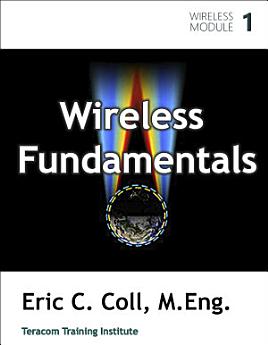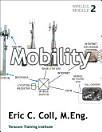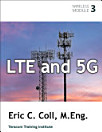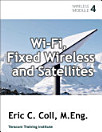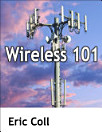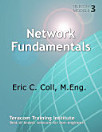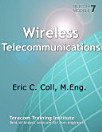Bu e-kitob haqida
Radio fundamentals • Spectrum • Digital radio • Modems and Modulation • Propagation, Penetration and Fading
Wireless Fundamentals is the first module in the Wireless series. We begin with the basics: what radio is, how it's organized and how and it's used to communicate information.
We'll understand how radio frequencies are in the Gigahertz range, used within frequency bands measured in the Megahertz wide.
Then we will look at the spectrum, i.e. standardized bands of frequencies, how they are allocated and the need for licenses. You will learn which bands are used for what, from cordless phones to Wi-Fi and cellular, including new allocations in 600, 700 and 800 MHz bands, 3.5 GHz fixed wireless, and new allocations for 5G including the 3.7 GHz C-band... and how some aircraft operators learned the meaning of "spectrum clearing".
Next, we'll understand how information is represented using radio. The first stop is a quick review of old-fashioned analog radio and TV, followed by what most systems use today: digital.
We'll spend some time understanding digital, how 1s and 0s are communicated by modems and familiarize you with jargon and buzzwords like QAM and QPSK.
We'll finish off with radio transmission issues, including propagation, penetration and fading.
Wireless Module 1
Detailed Outline
1 Wireless Fundamentals
1.1 Radio
...... 1.1.1 Definition of “Radio”
...... 1.1.2 Applications for Radio
...... 1.1.3 Representing Information Using Radio
1.2 Wireless Spectrum and Radio Bands
...... 1.2.1 The Need for Regulation
...... 1.2.2 Spectrum
...... 1.2.3 Capacity vs. Performance Tradeoff
...... 1.2.4 Frequency Bands
...... 1.2.5 Broadcast Television
...... 1.2.6 Repurposing of Broadcast Television Spectrum
...... 1.2.7 Two-Way Radio: FDD or TDD
...... 1.2.8 600 MHz Band
...... 1.2.9 700 MHz Band
...... 1.2.10 800, 900, 1800 and 1900 MHz bands
...... 1.2.11 Unlicensed Bands
...... 1.2.12 2.5 GHz Band
...... 1.2.13 3.5 GHz Band
...... 1.2.14 3.7 GHz C-Band 5G
...... 1.2.15 Millimeter-Wave Bands
1.3 Analog Radio
...... 1.3.1 Definition of Analog
...... 1.3.2 Carrier Frequency for Radio
...... 1.3.3 AM, FM and PM
1.4 Digital Radio: Modems
...... 1.4.1 Amplitude Shift Keying
...... 1.4.2 Frequency Shift Keying
...... 1.4.3 Phase Shift Keying
...... 1.4.4 Baud Rate
...... 1.4.5 More Signals = More Bits
...... 1.4.6 QPSK: 2 Bits per Signal
...... 1.4.7 QAM
...... 1.4.8 Limits
...... 1.4.9 Summary
1.5 Propagation, Penetration and Fading
...... 1.5.1 Propagation
...... 1.5.2 Omni Antennas
...... 1.5.3 Directional Antennas and Sectorization
...... 1.5.4 Attenuation and Carrier-to-Noise Ratio
...... 1.5.5 Fading
...... 1.5.6 Interference
Muallif haqida
Eric Coll is an international expert in telecommunications, broadband and networking, and has been actively involved in the telecom industry since 1983. He holds Bachelor of Engineering and Master of Engineering (Electrical) degrees.
Mr. Coll has broad experience, and broad knowledge of telecom developed working as an engineer in the telecommunications industry.
He has used his knowledge of telecom to develop and teach telecommunications technology training seminars to wide acclaim across North America since 1992... and answering questions at seminars for companies and organizations ranging from Bell Labs to the Department of Justice keeps things up to date.
In his spare time, Mr. Coll authors textbooks and online courses based on the latest updates to the seminar courses.
Mr. Coll also provides consulting services as a Subject Matter Expert in telecommunications to government, carriers, and their customers.
